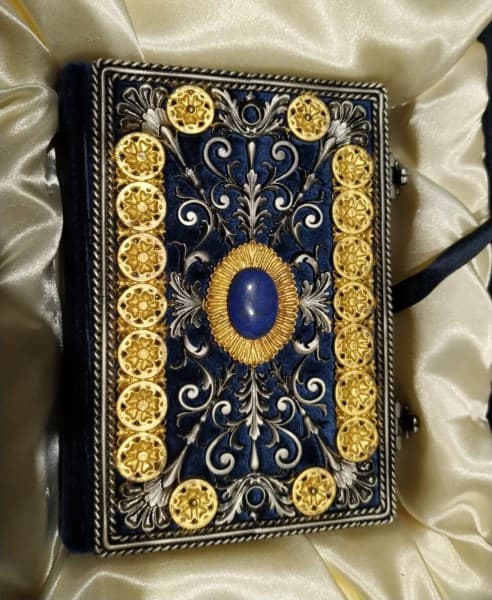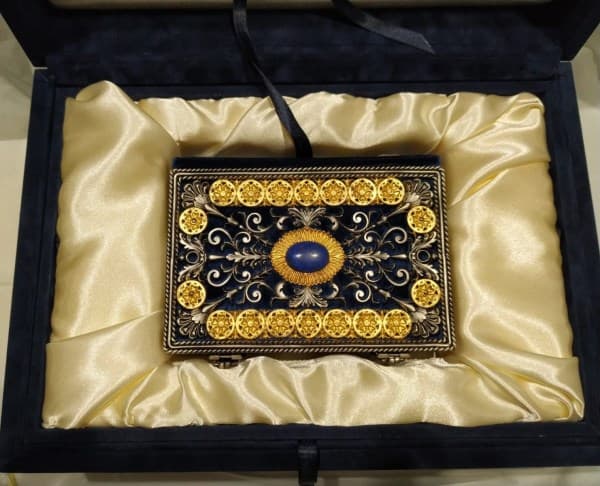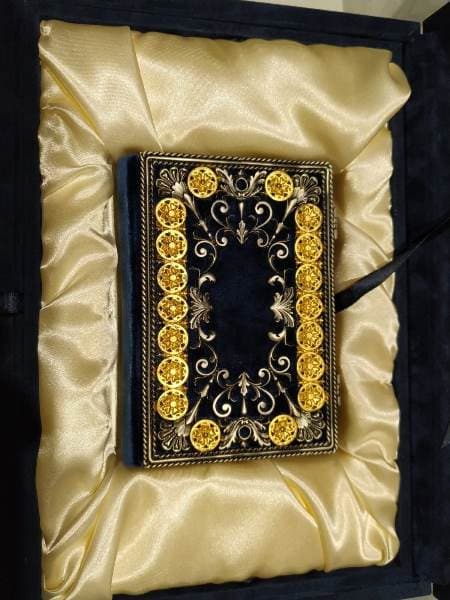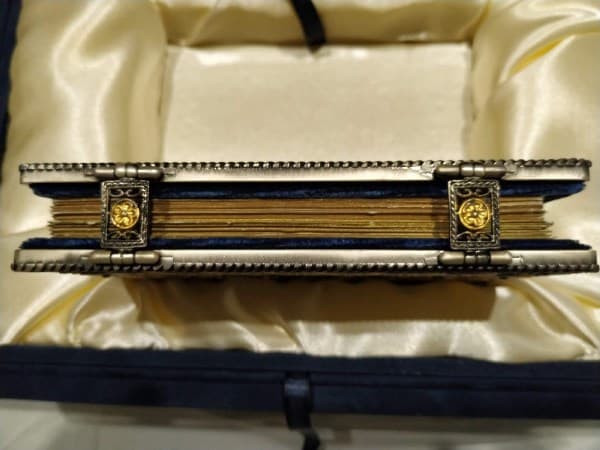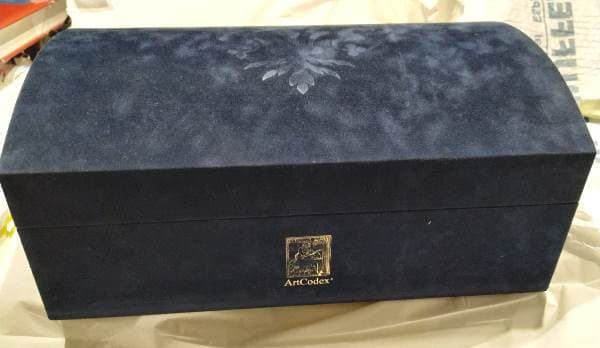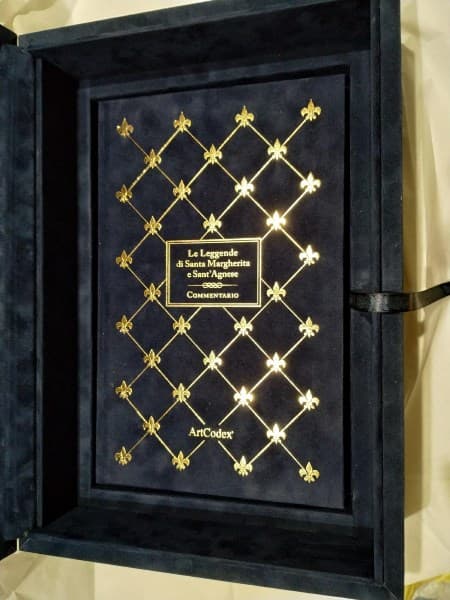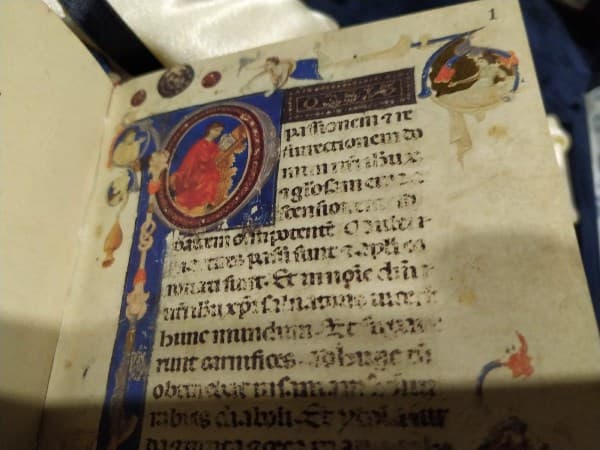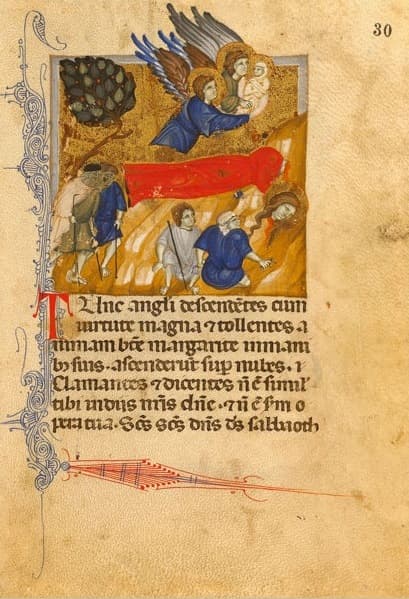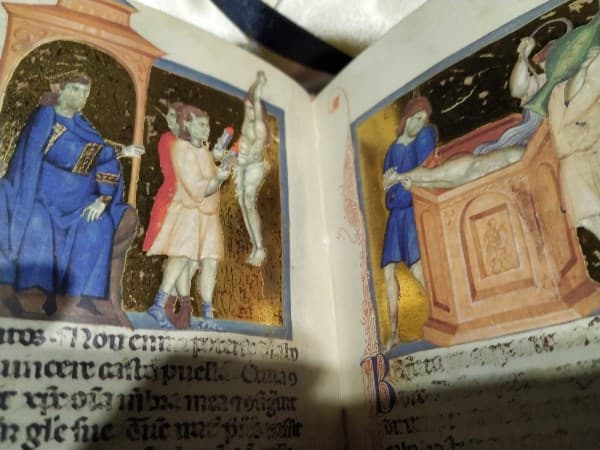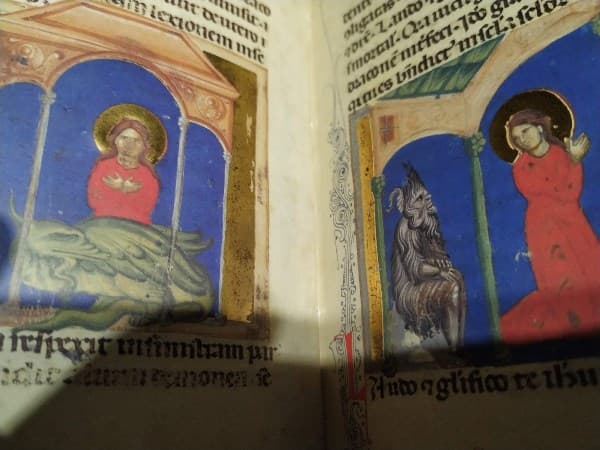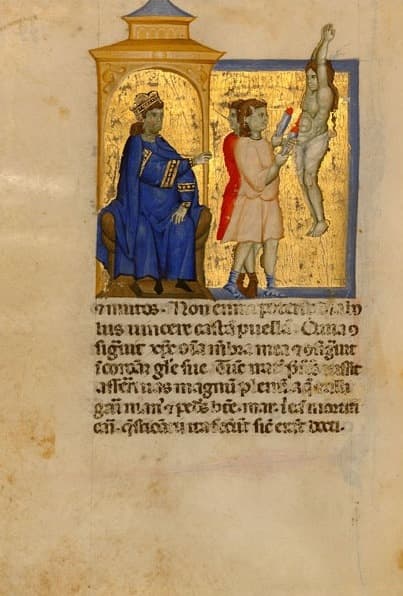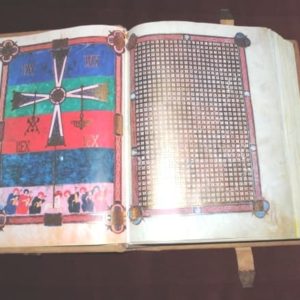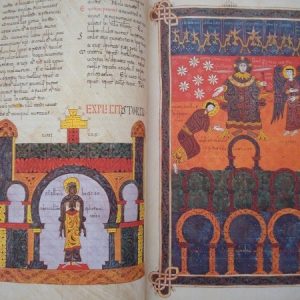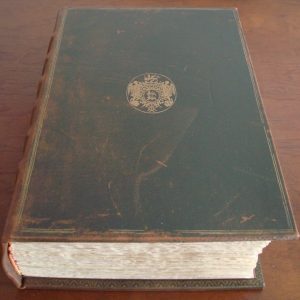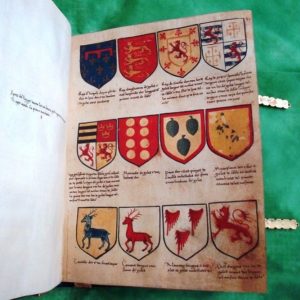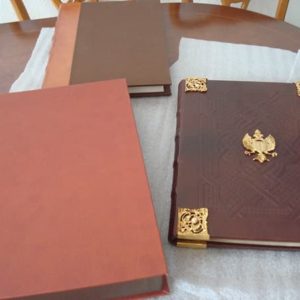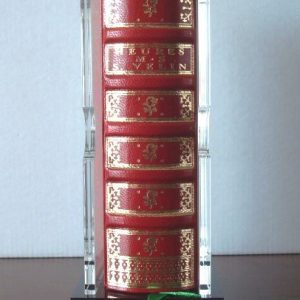Description
Fabulous facsimile edition of the Ricc manuscript. 453 of the Riccardiana Library of Florence, Le Leggende di Santa Margherita and Sant’Agnese.
The legend of the life of the two saints, inspired by the models of the Byzantine martyrs, has many points of contact: both women dedicated themselves to God and were the object of the attention of the powerful and, after their refusal, were subjected to horrible Tortures Miraculous events prove his holiness after his death.
The Riccardian manuscript is composed of two sections, probably joined at the beginning of the 14th century; Only the story of the Passion of Margarita de Antioquía is illustrated with illuminated images that stand out as a visual commentary on the text, marking its highlights, with a rhythm faithful to events.
The codex contains the richest ornamental ensemble of the legend, a refined record certainly meant for someone very powerful. Produced in Bologna at the end of the 13th century in a workshop specialized in realization of luxury volumes, which included sovereigns and high prelates among its “clients.” Despite its small size, it is a high quality product.
Filigree letters of elegant invoice mark the text and 33 miniatures, as well as two figurative initials, constitute the beautiful visual commentary. The scenes, made with typical images of the oldest codices and rich in classical reminiscences, are enclosed in frames that delimit them, isolating them on the page and giving them the prominence and meaning of the stories in the large painted panels dedicated to the celebration of the Saints. On a background of gold leaf, the characters move light and elegant between sober touches of landscape and architecture, with a sophisticated style that combines the Byzantine culture with a solid classical structure, revealing the hand of a great teacher, expert director of the set .
The hypothesis that the manuscript is linked to the figure of the blessed Margherita, daughter of the King of Hungary Bela IV, is very suggestive. Miraculously, at his birth, the Mongols, who had invaded the country forcing the sovereigns to take refuge in Dalmatia, withdrew and the court, with the girl, was able to return to Budapest. On the island that will bear his name, in the middle of the waters of the Danube, Margherita becomes a Dominican nun and lives in the faith even receiving the stigmas.
Facsimile Features:
Full reproduction in 23 karat gold on Bergamena paper from code 453 of the Riccardiana Library.
Volume format 10.3 x 14.5 cm. 122 pages, of which 15 are blank, with 33 full-page thumbnails.
Binding made entirely by hand, blue silk velvet cover, plates in gold and silver paper, natural lapis lazuli on the front plate.
Limited edition of 999 numbered and certified copies.
The work is presented in a beautiful blue box with double compartment and rests on an elegant champagne satin interior.
Volume of comments by Giovanna Lazzi, director of the Riccardiana Library in Florence. Texts in Italian.
The golden decoration, made with a patented system to place the gold foil, appears in relief as in the original code, as if it had suffered the action of time. Every detail is faithfully reproduced, from works in buril to golden designs, from gold dust extended with a brush to gold in gold leaf: the splendid effect obtained is that of a harmonious chromatic fusion between golden details and brilliant iconographic elements of the miniatures . The gold foil is applied with 23 kt gold.
The binding process is carried out using the habits of the old artisan binders. The work, carried out in manufacturing workshops that still retain the old manual press, corresponds to the manual sewing of the capital and the leaves, in absolute compliance with the profile of the manuscript pages. Finally, the cover is reproduced in facsimile strictly complying with all the characteristics of the original: each process is done by hand, respecting the state of the codex and using the materials of the time.
The type of parchment paper used, whose peculiarity guarantees that each sheet is the same as the original, the Pergamena paper, after an “aging” treatment, recreates the same movement effect that the passing of time has caused in the original. The color of the parchment is faithfully reproduced in the printing phase: each time sign, such as folds, spots and transparencies, is reproduced exactly, which helps give the codex the same sense of antiquity that characterizes the medieval manuscript.
Shipping by the buyer, upon request and destination. Ask us any questions, as well as any other items you are seeking.




